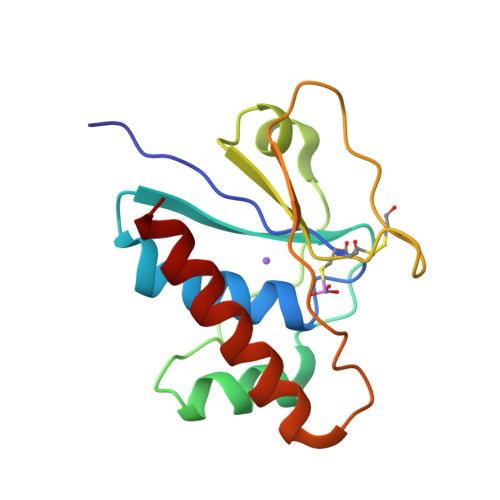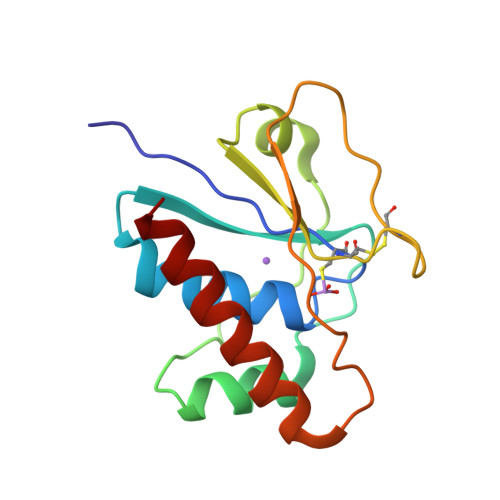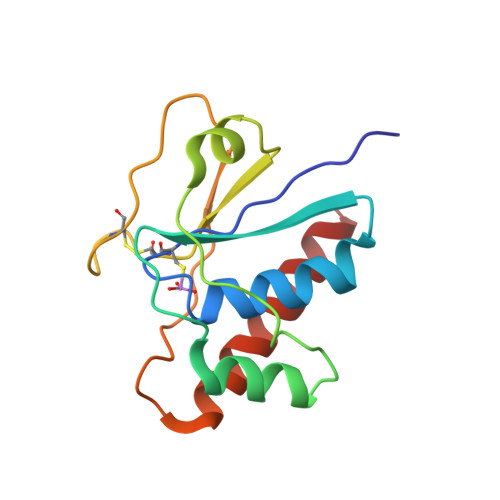All intermediates of the arsenate reductase mechanism, including an intramolecular dynamic disulfide cascade.
Messens, J., Martins, J.C., Van Belle, K., Brosens, E., Desmyter, A., De Gieter, M., Wieruszeski, J.M., Willem, R., Wyns, L., Zegers, I.(2002) Proc Natl Acad Sci U S A 99: 8506-8511
- PubMed: 12072565
- DOI: https://doi.org/10.1073/pnas.132142799
- Primary Citation of Related Structures:
1LJL, 1LJU, 1LK0 - PubMed Abstract:
The mechanism of pI258 arsenate reductase (ArsC) catalyzed arsenate reduction, involving its P-loop structural motif and three redox active cysteines, has been unraveled. All essential intermediates are visualized with x-ray crystallography, and NMR is used to map dynamic regions in a key disulfide intermediate. Steady-state kinetics of ArsC mutants gives a view of the crucial residues for catalysis. ArsC combines a phosphatase-like nucleophilic displacement reaction with a unique intramolecular disulfide bond cascade. Within this cascade, the formation of a disulfide bond triggers a reversible "conformational switch" that transfers the oxidative equivalents to the surface of the protein, while releasing the reduced substrate.
Organizational Affiliation:
Dienst Ultrastructuur, Vlaams interuniversitair Instituut voor Biotechnologie, Vrije Universiteit Brussel, Paardenstraat 65, 1640 St. Genesius-Rode, Belgium. jmessens@vub.ac.be




















